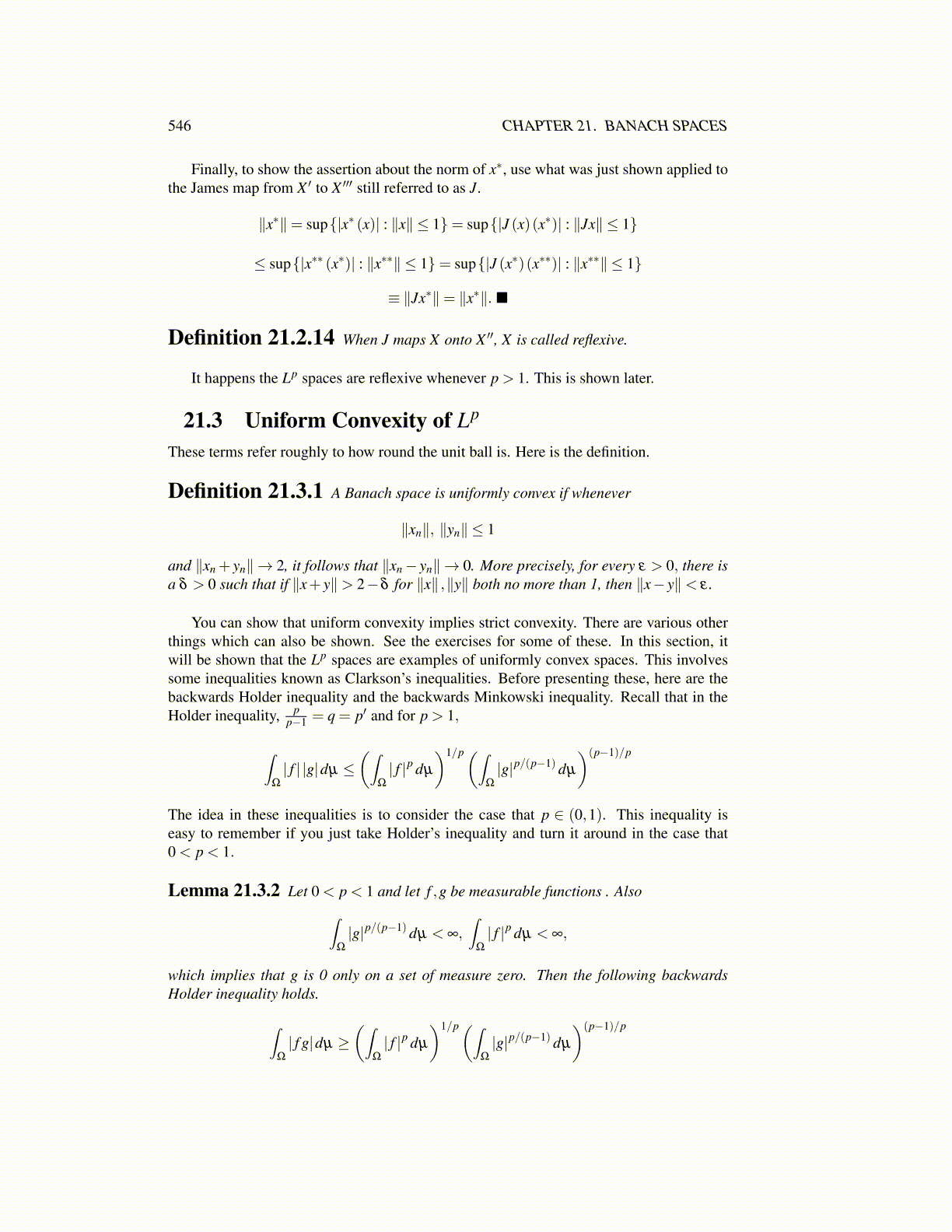
546 CHAPTER 21. BANACH SPACES
Finally, to show the assertion about the norm of x∗, use what was just shown applied tothe James map from X ′ to X ′′′ still referred to as J.
∥x∗∥= sup{|x∗ (x)| : ∥x∥ ≤ 1}= sup{|J (x)(x∗)| : ∥Jx∥ ≤ 1}
≤ sup{|x∗∗ (x∗)| : ∥x∗∗∥ ≤ 1}= sup{|J (x∗)(x∗∗)| : ∥x∗∗∥ ≤ 1}
≡ ∥Jx∗∥= ∥x∗∥. ■
Definition 21.2.14 When J maps X onto X ′′, X is called reflexive.
It happens the Lp spaces are reflexive whenever p > 1. This is shown later.
21.3 Uniform Convexity of Lp
These terms refer roughly to how round the unit ball is. Here is the definition.
Definition 21.3.1 A Banach space is uniformly convex if whenever
∥xn∥, ∥yn∥ ≤ 1
and ∥xn + yn∥ → 2, it follows that ∥xn− yn∥ → 0. More precisely, for every ε > 0, there isa δ > 0 such that if ∥x+ y∥> 2−δ for ∥x∥ ,∥y∥ both no more than 1, then ∥x− y∥< ε .
You can show that uniform convexity implies strict convexity. There are various otherthings which can also be shown. See the exercises for some of these. In this section, itwill be shown that the Lp spaces are examples of uniformly convex spaces. This involvessome inequalities known as Clarkson’s inequalities. Before presenting these, here are thebackwards Holder inequality and the backwards Minkowski inequality. Recall that in theHolder inequality, p
p−1 = q = p′ and for p > 1,
∫Ω
| f | |g|dµ ≤(∫
Ω
| f |p dµ
)1/p(∫Ω
|g|p/(p−1) dµ
)(p−1)/p
The idea in these inequalities is to consider the case that p ∈ (0,1). This inequality iseasy to remember if you just take Holder’s inequality and turn it around in the case that0 < p < 1.
Lemma 21.3.2 Let 0 < p < 1 and let f ,g be measurable functions . Also∫Ω
|g|p/(p−1) dµ < ∞,∫
Ω
| f |p dµ < ∞,
which implies that g is 0 only on a set of measure zero. Then the following backwardsHolder inequality holds.
∫Ω
| f g|dµ ≥(∫
Ω
| f |p dµ
)1/p(∫Ω
|g|p/(p−1) dµ
)(p−1)/p